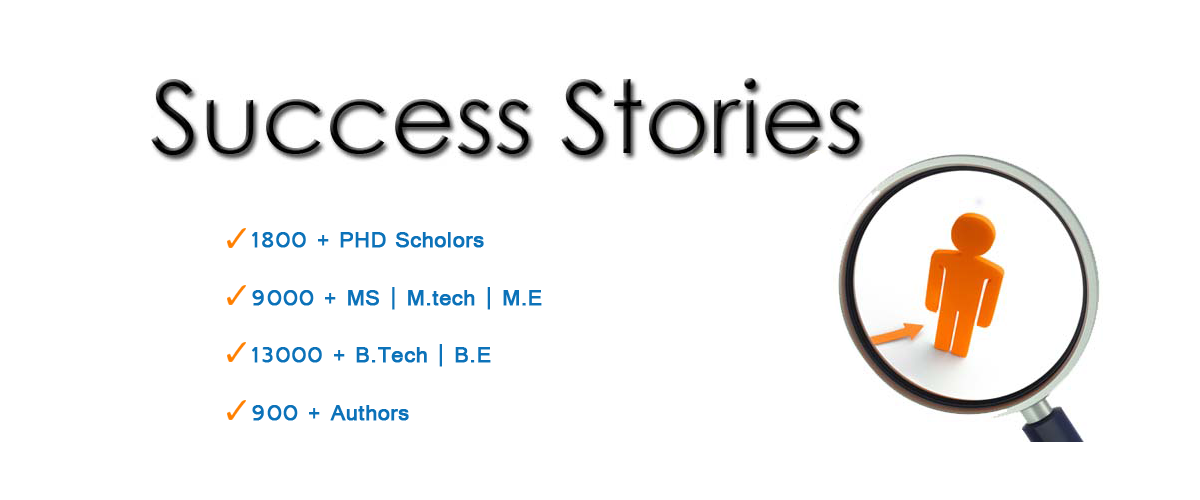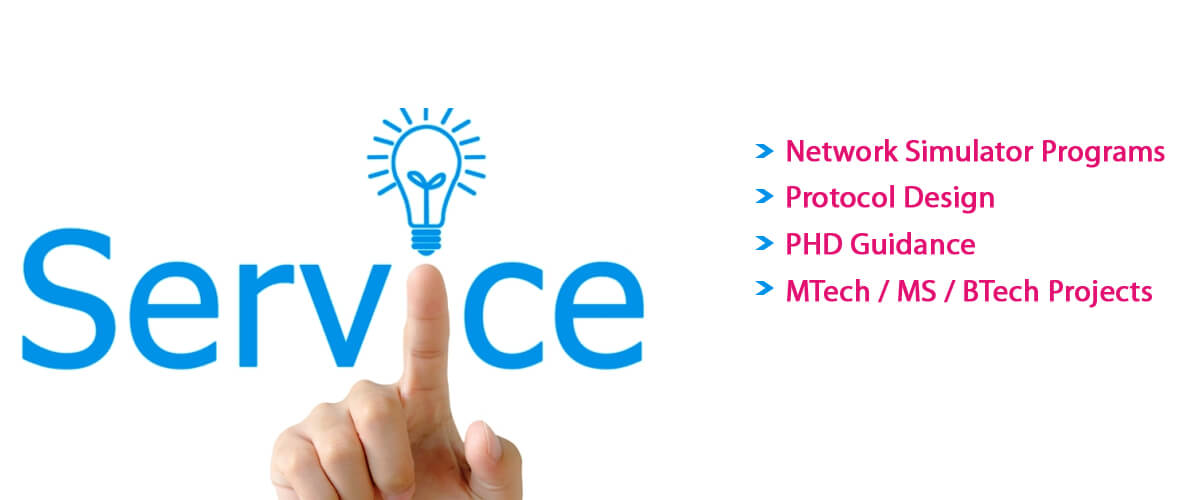Cloud Computing Important Topics
Cloud Computing Important Topics that are endlessly emerging, which are considered as highly ideal for developing projects are shared by us. We have more than 15+ years of research experience we assure you with best Cloud Computing research help. Relevant to cloud computing, we recommend a few major topics that are both latest and compelling:
- Cloud Service Models
- Infrastructure as a Service (IaaS): Through the internet, the IaaS offers virtualized computing resources. Potential instances are Google Compute Engine and Amazon EC2.
- Platform as a Service (PaaS): Specifically for application development, the software and hardware tools are provided by PaaS across the internet. It could involve Microsoft Azure App Service and Google App Engine.
- Software as a Service (SaaS): Through the internet, it distributes software applications based on subscription. Some of the instances are Salesforce and Google Workspace.
- Cloud Deployment Models
- Public Cloud: In public cloud, the services are distributed among firms by transferring through the public internet. It includes Google Cloud Platform, Microsoft Azure, and AWS.
- Private Cloud: For providing high security and control, it manages the services on a private network. For instance: VMware vSphere and OpenStack.
- Hybrid Cloud: To distribute applications and data among private and public clouds, it integrates them. Possible instances are AWS Outposts and Microsoft Azure Stack.
- Multi-Cloud: As a means to enhance strength and prevent vendor lock-in, it utilizes several cloud services from diverse providers.
- Cloud Security
- Data Encryption: By means of encryption algorithms such as RSA and AES, we plan to secure data in both active and inactive states.
- Identity and Access Management (IAM): To assure safer access to resources, the user identities and consents have to be handled.
- Compliance and Regulatory Issues: Compliance with principles must be assured. Some of the potential principles are CCPA, HIPAA, and GDPR.
- Threat Detection and Response: For actual-time identification and response to hazards, apply efficient security techniques.
- Virtualization and Containerization
- Virtual Machines (VMs): On a single physical server, numerous virtual instances have to be executed.
- Containers: To execute applications, they are effective, movable, and lightweight. For instance: Kubernetes and Docker.
- Orchestration: With the aid of tools such as Kubernetes, we aim to handle containerized applications.
- Serverless Computing
- Function as a Service (FaaS): Without allocating or handling servers, the code has to be executed in consideration of events. It encompasses Azure Functions, Google Cloud Functions, and AWS Lambda.
- Benefits and Challenges: Focus on serverless frameworks, and examine their shortcomings, cost effectiveness, and scalability.
- Edge and Fog Computing
- Edge Computing: To minimize latency, the data should be processed nearer to the data source. For instance: Azure IoT Edge and AWS IoT Greengrass.
- Fog Computing: By offering supplementary layers of storage and processing, the cloud abilities must be expanded to the edge.
- Big Data and Cloud Computing
- Data Processing Frameworks: For big data processing in the cloud, we intend to use frameworks such as Spark and Hadoop.
- Data Storage: Plan to employ adaptable storage approaches. It could involve Google Cloud Storage, Azure Blob Storage, and AWS S3.
- Data Analytics: By means of cloud services such as Azure Synapse, Google BigQuery, and AWS Redshift, the analytics process must be carried out.
- Cloud Networking
- Virtual Private Cloud (VPC): Across the public cloud, isolated networks have to be developed. For instance: Azure Virtual Network and AWS VPC.
- Load Balancing: Among several servers, the workloads should be shared. It could encompass Google Cloud Load Balancing and AWS Elastic Load Balancer.
- Content Delivery Networks (CDN): With less latency, the content has to be transferred to users. Some of the possible instances are Azure CDN and Amazon CloudFront.
- Cloud Automation and DevOps
- Continuous Integration/Continuous Deployment (CI/CD): The software development lifecycle has to be automated. It could include GitLab CI/CD, GitHub Actions, and Jenkins.
- Infrastructure as Code (IaC): By means of code, the infrastructure must be handled. For instance: Ansible, AWS CloudFormation, and Terraform.
- Monitoring and Logging: Cloud resources and applications have to be monitored. It involves Google Cloud Operations, Azure Monitor, and AWS CloudWatch.
- Artificial Intelligence and Machine Learning in the Cloud
- AI/ML Services: For model training and placement, we plan to use cloud-related AI/ML services. For instance: Azure Machine Learning, Google AI Platform, and AWS SageMaker.
- Data Lakes: Particularly for the analysis process, a wide range of raw data should be stored. It could encompass Google Cloud Storage, Azure Data Lake, and AWS Lake Formation.
- Cloud Cost Management
- Cost Optimization: For minimizing cloud expenses, consider efficient methods. It could involve reserved instances, utilization patterns, and resource tracking.
- Billing and Pricing Models: Relevant to cloud providers, different pricing models have to be interpreted.
- Disaster Recovery and Backup Solutions
- Backup Strategies: To assure data morality and accessibility, efficient backup approaches must be applied. For instances: Google Cloud Backup, Azure Site Recovery, and AWS Backup.
- Disaster Recovery Plans: In order to assure business endurance and retrieve from disaster faults, robust policies should be created.
- Blockchain and Distributed Ledger Technology in Cloud
- Blockchain as a Service (BaaS): Across the cloud, we focus on providing blockchain services. For instance: AWS Managed Blockchain and Azure Blockchain Service.
- Decentralized Applications (DApps): Based on blockchain mechanism, the applications have to be created.
- Quantum Computing in the Cloud
- Quantum Services: Over the cloud, the quantum computing resources should be approached. It could encompass Amazon Braket, Microsoft Azure Quantum, and IBM Q Experience.
- Quantum Algorithms: With cloud-related quantum computing resources, the quantum algorithms have to be created and examined.
- Ethical and Legal Aspects of Cloud Computing
- Data Privacy: In cloud platforms, the confidentiality of user data has to be assured.
- Ethical Use of Cloud Resources: Specifically in cloud computing, focus on moral concerns such as AI and data utilization morals.
What are the four areas of cloud security?
Several interesting areas are commonly involved in the field of cloud security. As four major areas, cloud security can be widely classified, even though it encompasses numerous factors. Regarding the four major areas of cloud security, we offer a brief explanation and ideal techniques:
- Data Security
Explanation: During the lifecycle processes such as development, storage, transmission, and erasure, the data should be secured, which is a major goal of this area. Numerous important approaches and mechanisms could be encompassed in the process of assuring cloud-based data security.
- Encryption: To secure the data against illicit access, it must be encrypted in active (while distributing data through networks) as well as inactive (stored data) states.
- Data Masking and Tokenization: In addition to preserving data utility for legal users, it should be masked to avoid revelation.
- Data Loss Prevention (DLP): To identify and obstruct illicit transmissions, data leakages, and violations, we plan to apply mechanisms and strategies.
- Access Controls: By means of techniques such as multi-factor authentication (MFA) and role-based access control (RBAC), assure that confidential data can be accessed only by legal users and applications.
- Identity and Access Management (IAM)
Explanation: In the cloud, the resource accessibility can be handled and controlled by IAM. This area assures that particular resources can be accessed only by the legal users through required consents.
- Authentication: By utilizing techniques such as MFA, biometrics, and passwords, the identity of users and devices has to be checked, especially who access the cloud.
- Authorization: Strategies have to be outlined and implemented, which indicate the processes that can be conducted on resources by users. Attribute-based or role-based access control technique is generally encompassed.
- User Provisioning and De-provisioning: The lifecycle of user accounts must be handled. It could involve processes such as account development, upgrading, and erasing based on the requirements.
- Federated Identity Management: Through connecting user identities among various fields, the reliable access and single sign-on (SSO) should be facilitated over several cloud environments and services.
- Network Security
Explanation: To assure data morality, accessibility, and privacy, the network architecture has to be secured across the cloud platform.
- Firewalls: On the basis of predefined security principles, we aim to filter and track inbound and outbound traffic by applying network firewalls.
- Intrusion Detection and Prevention Systems (IDPS): Across the network, the policy breaches and harmful actions have to be identified and obstructed.
- Virtual Private Network (VPN): Safer remote access must be assured to cloud resources. For that, encrypted, secure connections should be developed across the internet.
- Network Segmentation: To improve security controls and restrict the distribution of assaults, the network has to be partitioned into segments.
- DDoS Protection: In order to secure from Distributed Denial of Service (DDoS) assaults, apply efficient techniques. Service accessibility could be interrupted by this assault.
- Compliance and Governance
Explanation: Regulatory, judicial, and business principles and ideal approaches should be followed by the cloud processes, and assuring this aspect is important.
- Regulatory Compliance: Rules and principles like CCPA, HIPAA, and GDPR have to be followed. For managing confidential data, these principles require particular techniques relevant to security and confidentiality.
- Security Policies and Procedures: Across the cloud platform, control the process of handling security by introducing and implementing techniques and strategies.
- Audit and Monitoring: To enhance security measures, assure compliance, and identify and react to security events, the cloud activities must be tracked and reviewed in a consistent way.
- Risk Management: As a means to secure from possible vulnerabilities and hazards, the risks have to be detected, evaluated, and reduced, which are specifically related to cloud computing.
- Data Residency and Sovereignty: According to the rules and principles of native and national data residency, the data should be processed and stored, and assuring this factor is significant.
Highlighting the cloud computing domain, we suggested several important topics, along with brief outlines and some instances. Relevant to cloud security, the four significant areas are specified by us, including concise explanations.
Cloud Computing Important Ideas
Cloud Computing Important Ideas along with topics, implementation re provided by us for the topics shared down, send us the area of your specifications we will help you with necessary support, get your paper written as per your university format from our domain experts. Send us a message we will guide you until completion.
- Improving the Response Time of M-Learning and Cloud Computing Environments Using a Dominant Firefly Approach
- A Modified Hierarchical Attribute-Based Encryption Access Control Method for Mobile Cloud Computing
- Task Scheduling Based on Multi-level Hashing and HRRN in cloud computing
- Price efficiency in High Performance Computing on Amazon Elastic Compute Cloud provider in Compute Optimize packages
- Cooperative Application Execution in Mobile Cloud Computing: A Stackelberg Game Approach
- Comparison of in-house HPC calculation with public cloud computing for parallel algorithm containing recursive functions
- A Task Scheduling Algorithm Based on Genetic Algorithm and Ant Colony Optimization Algorithm with Multi-QoS Constraints in Cloud Computing
- Improving public auditability, data possession in data storage security for cloud computing
- A Security Model for the Enhancement of Data Privacy in Cloud Computing
- A new multi-resource allocation mechanism: A tradeoff between fairness and efficiency in cloud computing
- Virtualizing General Purpose GPUs for High Performance Cloud Computing: An Application to a Fluid Simulator
- Round Robin Scheduling Algorithm in CPU and Cloud Computing: A review
- Cloud Computing in Amazon and Microsoft Azure platforms: Performance and service comparison
- Security Structure Study of City Management Platform Based on Cloud Computing under the Conception of Smart City
- Multi-objective ACO virtual machine placement in cloud computing environments
- An Integrated Building Fire Evacuation System with RFID and Cloud Computing
- Behavioral Modeling for Suspicious Process Detection in Cloud Computing Environments
- R-HBase: A Multi-dimensional Indexing Framework for Cloud Computing Environment
- Resource management mechanism for SLA provisioning on cloud computing for IoT
- Energy-efficient Multi-task Scheduling Based on MapReduce for Cloud Computing







